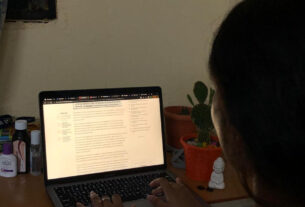NGOs say that trafficking restarted after the first Covid-19 lockdown was lifted and it mostly happened through open borders of neighbouring countries.
Kolkata: Human trafficking in India has seen an increase throughout the pandemic say NGOs
Mau Bhattacharya, Master Trainer and Programme Manager of Uddami India Foundation, has worked to lessen the frequency of trafficking for many years. She said that currently, two types of trafficking are happening in the country, i.e. intra-trafficking (trafficking within India) and international trafficking.
“In intra-trafficking, Kolkata is now treated as a transition point for traffickers since business is low here. The trafficked victims are then transported to various places in the country like Delhi, Haryana, Uttar Pradesh, Bihar and especially Maharashtra from Mumbai,” said Bhattacharya.
She mentioned that since Mumbai is the economic capital of the country, trafficking business is rampant there. There is also the Mumbai to Dubai trafficking racket to be considered.
The National Crime Records Bureau’s (NCRB) 2019 report on missing women and children in India has shown that West Bengal has ranked as the second most trafficked state for women and children below Maharashtra and Uttar Pradesh, respectively. This article talks about how the organised drug trade found its way to stay in business even during the pandemic. The same has been observed about human trafficking.
Adult women can be rescued under the Immoral Traffic (Prevention) Act (ITPA) but it needs to be proven that these women are being transported against their will. Children, anyone below 18 years of age, under the Juvenile Justice (Care and Protection of Children) Act where child welfare committees take in the children for their rehabilitation programs.
Bhattacharya mentioned that most of the international trafficking occurs at the India-Nepal and Bangladesh-India border.
“Trafficking occurs in the Nepal border since we don’t need a passport to go there but most cases occur in the Bangladesh-India border. I spoke to victims and found that this happens usually through the Petrapole-Benapole border where women and children are trafficked via the water bodies in that area during the night,” said Bhattacharya.
Bhattacharya said that the adult women who are trafficked are told that they are being sent for work. Since people speak the same tongue in West Bengal, the victims don’t realise that they’re in a different country. Once the victims are sent to different cities in India where they hear unfamiliar languages being spoken, they realize the situation.
A study on the cross border trafficking along the Indo-Bangladesh border shows us that most of the victims come from financially vulnerable homes in remote villages of Bangladesh. Another missing person report by the NCRB published in 2019 says that most of the trafficked victims, adult or child, are women. They comprise around 376 of the 627 cases, around 60 per cent.
“Trafficking cases increased a lot during the pandemic. The moment the trains opened up, trafficking commenced. Most of the victims come from poor rural families and many times their neighbours are involved in their trafficking,” said Bhattacharya.
The punishment for human trafficking in Bangladesh is the death penalty. Yet, cases continue to rise. “When any victim decides to fight for their justice, traffickers buy them out by giving hefty amounts of money to their families. The families, because of their poor financial status, choose to take the money rather than fighting the case,” said Bhattacharya.
Bhattacharya further mentioned that when she was doing a study on Canning, a town in south 24 Parganas district in West Bengal, questions on human trafficking weren’t entertained.
“The moment our team started asking about human trafficking, we were held at gunpoint and thrown out of the village by a local politician,” said Bhattacharya. In 2017, a politician was charged in a human trafficking racket.
Difficulty in Prosecution
There are many NGOs in the country that help in the prevention, prosecution and rehabilitation of victims. Sanlaap, the first organisation in the country to work on the human trafficking of minor girls, does all three. But most NGOs work towards prevention and rehabilitation since the prosecution is more difficult.
Souvik Basu, who works for Sanlaap, said that a big reason behind the difficulty in prosecuting such cases is the lack of evidence and witnesses. “Many cases are reported late. Any organisation cannot do rescue operations if there aren’t any reported or registered cases. Word of mouth isn’t enough,” said Basu.
Basu said that after the first pandemic was unlocked, many children were being illegally migrated. There were also some cases where female victims met some men online and were then trafficked.
“When a victim is rescued and sent home, they turn hostile since many times the perpetrator behind their trafficking is from the same locality. Witness protection in our country is very poor and sometimes the cases go on for much longer than they’re supposed to,” added Basu.
Dr. Sarbani Goswami, a sociologist and professor in the School of Women’s Studies at Jadavpur University, believes that the rise in consumerism has also helped in the rise in cases of human trafficking.
“The increasing consumerist attitude among people also plays a part in this. Understandably, a parent would like to provide their child with a mobile phone or a similar gadget. But it is through these phones that the victims are contacted by people who later turn out to be traffickers. Awareness of the perils of technology should be increased,” said Dr. Goswami.
Dr. Goswami added that sometimes hostile relationships between a parent and child in poverty-stricken homes lead to the parent directly contributing to their children getting trafficked.



